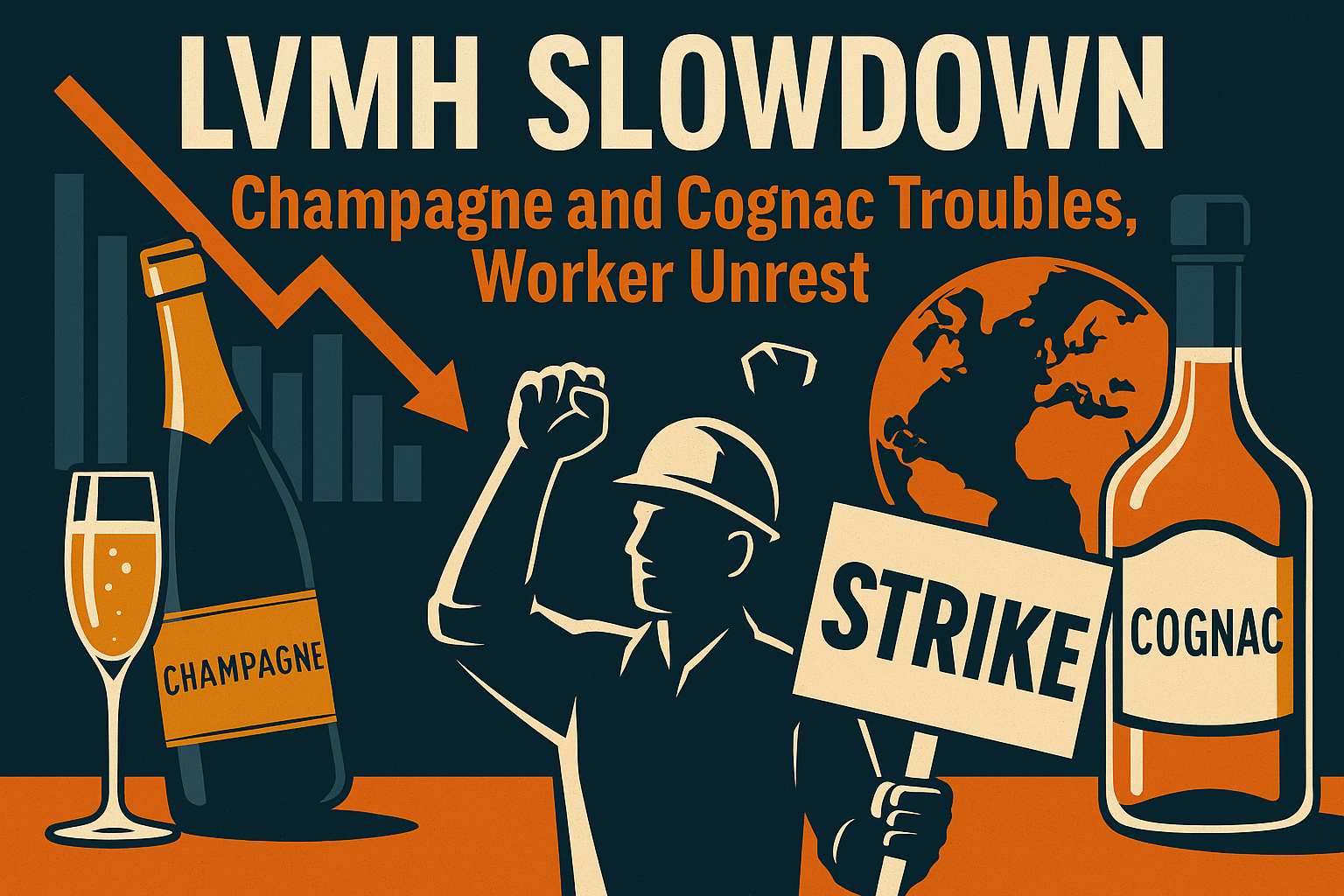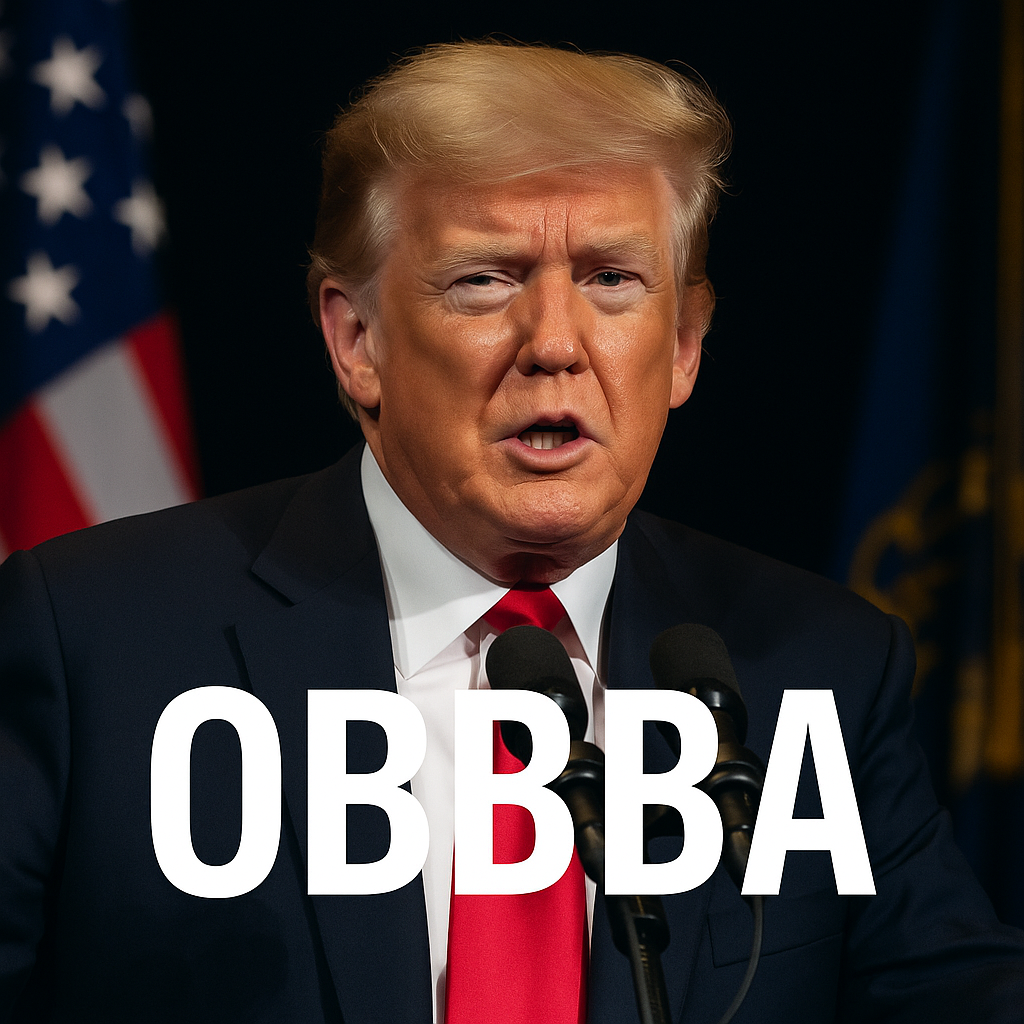LVMH Slowdown: The Luxury Giant Grapples with Champagne Troubles, Cognac Crisis, and Worker Unrest
Introduction: When the Bubbles Fade
For decades, LVMH—the world’s most powerful luxury conglomerate—has symbolized opulence and invincibility. Its Moët Hennessy division, home to iconic labels like Hennessy cognac and Moët & Chandon champagne, has long been a cornerstone of its global dominance. But as 2025 unfolds, the empire is confronting turbulence that’s more than a passing hiccup.
From falling champagne sales and a cognac slowdown in key markets to employee unrest and looming job cuts, the LVMH slowdown is no longer theoretical—it’s real, it’s visible, and it’s making headlines across Europe.
This article dives deep into the reasons behind this surprising twist in the luxury world, offering context, clarity, and insight.
A Brief History of Moët Hennessy: Prestige in a Bottle
Before exploring the downturn, it’s important to understand what’s at stake. Moët Hennessy, LVMH’s Wines and Spirits division, is a world leader in premium alcoholic beverages. Its portfolio includes:
- Hennessy – The world’s most recognized and consumed cognac brand
- Moët & Chandon – Among the most popular champagnes globally
- Veuve Clicquot, Dom Pérignon, Krug – Champagne royalty
- Château d’Esclans, Glenmorangie, and Ardbeg – Expanding LVMH’s reach into rosé and whisky
This division was once the silent engine of LVMH, delivering consistent profits and prestige. But in 2024 and early 2025, the story began to change.
What’s Fueling the LVMH Slowdown?
The LVMH slowdown has not come out of nowhere. It’s the result of a combination of global and internal factors, each compounding the other:
Champagne’s Trou d’air (Air Pocket)—When Sales Lose Sparkle
LVMH’s champagne labels faced what French insiders call a “trou d’air“—literally, an “air pocket” or sudden drop in momentum. After a record-breaking post-COVID demand boom, sales dropped sharply in 2024 and continued falling into 2025.
Global champagne exports fell over 10%, and even though LVMH retained its market leadership, the decline hit hard. Consumers in major export destinations, particularly in Europe and the U.S., are becoming more selective, opting for affordable alternatives or drinking less overall.
Weather conditions also disrupted grape harvests in Champagne country, compounding the problem.
Cognac Crisis in China and the U.S.
Meanwhile, Hennessy, LVMH’s crown jewel in the cognac category, has run into serious trouble.
In China, the government’s anti-dumping inquiry has made French cognac imports politically complicated and financially costly. LVMH’s cognac shipments to China dropped by 24% in value in 2024.
In the U.S., economic uncertainty and shifting consumption habits reduced premium liquor purchases.
Even though Hennessy gained global market share in 2024, it couldn’t shield LVMH from the broader cognac crisis.
Inside the Numbers – LVMH’s Financial Dip
The financial toll has been severe.
- 2024 operating profit for the Moët Hennessy division fell by a staggering 36%
- Revenue dropped by 11% to €5.86 billion
- The first quarter of 2025 saw an additional 9% fall in sales
For a business that rarely showed weakness, these figures were enough to trigger a strategic reset.
Job Cuts and Worker Unrest – Tension in Épernay
The financial squeeze has translated into human consequences. LVMH plans to cut 1,000 to 1,200 jobs in its Wines & Spirits division, aiming to return to pre-COVID staffing levels (from 9,400 back to around 8,200 employees).
The announcement was not well received—especially by the workers at Moët & Chandon’s historic Épernay site.
A Strike Brews in Champagne Country
Unions, including CGT and FO, called a surprise strike (débrayage) on June 3, 2025. Workers were outraged that they first heard about layoffs from the press.
“There’s no dialogue, no respect. We found out like everyone else—on our phones,” said one union leader.
The unions demanded:
- Clear details about which departments and sites would be affected
- A formal economic justification for the cuts
- A commitment to social responsibility from LVMH
They’ve also hinted at escalating protests, possibly even in Paris, if management continues to avoid direct communication.
DD Session: Worker Frustration Reaches Management
LVMH slowdown :On June 5, 2025, Moët Hennessy held a délégués du personnel (DD) session with elected worker representatives. Although not a decision-making meeting, it offered a rare moment of direct communication.
Union delegates reportedly confronted management with questions about:
- The transparency of the decision process
- Whether additional restructuring might follow
- How temporary workers and subcontractors would be affected
The company reiterated that no “mass layoffs” are planned, and all cuts will be through natural attrition. However, workers left the meeting feeling unsatisfied, saying that key details remained vague.
How LVMH Plans to Respond
LVMH insists it is not laying off workers but will reduce staff through natural attrition—i.e., not renewing temporary contracts and not replacing retiring employees. The company has also shuffled leadership at Moët Hennessy, bringing in a new CEO and deputy to oversee this delicate transition.
To offset falling profits, LVMH is focusing on:
- Limited-edition champagne vintages and brand storytelling
- Expanding into non-alcoholic luxury beverages
- Growing its presence in the premium whisky and rosé markets
- Strategic pricing and supply chain optimization
But whether these moves can stabilize the ship in time remains to be seen.
Q&A – Clearing Your Doubts About the LVMH Slowdown
Why are champagne and cognac sales dropping?
The reasons vary by region. In the West, inflation and cautious consumer spending have hurt luxury alcohol sales. In China, political tensions and economic slowdown are key drivers. For champagne, oversupply after the COVID-era boom and poor harvests have played a role.
Are the job cuts layoffs or voluntary exits?
LVMH claims the reductions will happen through natural attrition, not layoffs. However, unions are skeptical and are demanding legal and economic guarantees.
Is LVMH still profitable?
Yes, but less so. Its Wines and Spirits division has seen the sharpest declines. Other segments like fashion and cosmetics remain strong, cushioning the impact.
Is this crisis temporary?
LVMH believes so. The leadership has called it a “market adjustment” and expects improvement over the next 12–24 months. But global economic uncertainties mean there’s no guaranteed timeline.
How are consumers reacting?
LVMH slowdown : Luxury alcohol buyers are becoming more selective. While some are trading down to mid-range labels, others are simply consuming less. The days of excess may be giving way to more thoughtful drinking.
Key Terms Explained
Débrayage (Work Stoppage)
Meaning: A short-term strike or protest work stoppage
Relevance: Used by Moët & Chandon workers to protest job cuts
Trou d’air (Air Pocket)
Meaning: A sudden drop or slowdown in activity
Relevance: Describes the plunge in champagne sales
Natural Attrition
Meaning: Reducing workforce by not replacing staff who leave
Relevance: LVMH’s preferred method for job reduction
Moët Hennessy
Meaning: LVMH’s Wines and Spirits division
Relevance: Core division currently facing setbacks
CSE (Comité Social et Économique)
Meaning: Workers’ committee in French companies
Relevance: Must be consulted before layoffs
Cognac
Meaning: Brandy from the Cognac region in France
Relevance: Hennessy’s main product, now facing global decline
Champagne
Meaning: Sparkling wine from the Champagne region
Relevance: LVMH’s flagship product category, experiencing falling demand
Conclusion – A Moment of Reckoning for LVMH
The LVMH slowdown has exposed a truth long hidden by champagne bubbles and brand prestige: even the most powerful luxury empires are vulnerable to economic cycles, global politics, and changing consumer habits.
What sets LVMH apart is its ability to adapt. Whether it can navigate this period without alienating workers, shrinking market share, or compromising brand value remains the billion-euro question.
For now, all eyes are on Épernay and Cognac—not just for what’s in the bottle, but for what they reveal about the future of luxury in a changing world.
Read More In Our English Section














Leave a Reply